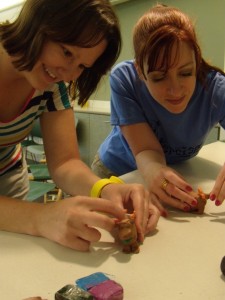Connecting Art and Science

Originally appears in the Summer 2012 issue
When it comes to tackling the task of teaching difficult scientific concepts, art can be a gateway to helping students better understand what’s going on.(1) World-renowned physicist Albert Einstein said: “the greatest scientists are artists as well.”(2) Leonardo DaVinci was a painter, Charles Darwin drew his theories of evolution, and Einstein himself was often seen playing his piano or violin. In fact, our current understanding of colors began with a scientist: Sir Isaac Newton. He was the first person to discover the rainbow and draw its colors as a color wheel, which gave artists a useful way to view colors and their complements.(3)
In the past, these famous scientists, as well as many other researchers, experimenters, and explorers of every kind worked in both the arts and sciences simultaneously.(4) Unfortunately, in many schools today, art and science have been divided. Policymakers have chosen to take funding away from the arts in favor of bolstering specific core curricula, such as science and math. (5) But, the practice of art supports scientific thinking and learning,(6) demonstrating that these two subjects really do go hand-in-hand.
Making art helps students make sense of their world.(7) It also helps them learn how to problem solve and think with ingenuity. When students create a piece of artwork they ask themselves questions (What do I want to make?), take action (How do I make it?), and reflect on what they made (Does this look how I want it to look?). This process mirrors the process of scientific inquiry, where students engage in a similar cycle that puts them in charge of their own learning. (8)
This article presents two art-based activities that will help reunite science and the arts. The first employs the color wheel to help students understand the concept of biodiversity. The second uses sculpture to help students learn about the process of evolution. As students participate in these lessons, they’ll be making art while simultaneously learning about science.
To view the photo-rich magazine version, click here.
If you are not already a subscriber, please subscribe to read the full article
Amanda Berlinski is an artist and informal educator who specializes in using art to teach students about nature and science. You can view more student work from these activities on her website: amandaberlinski.com.
Leave a Reply
You must be logged in to post a comment.










